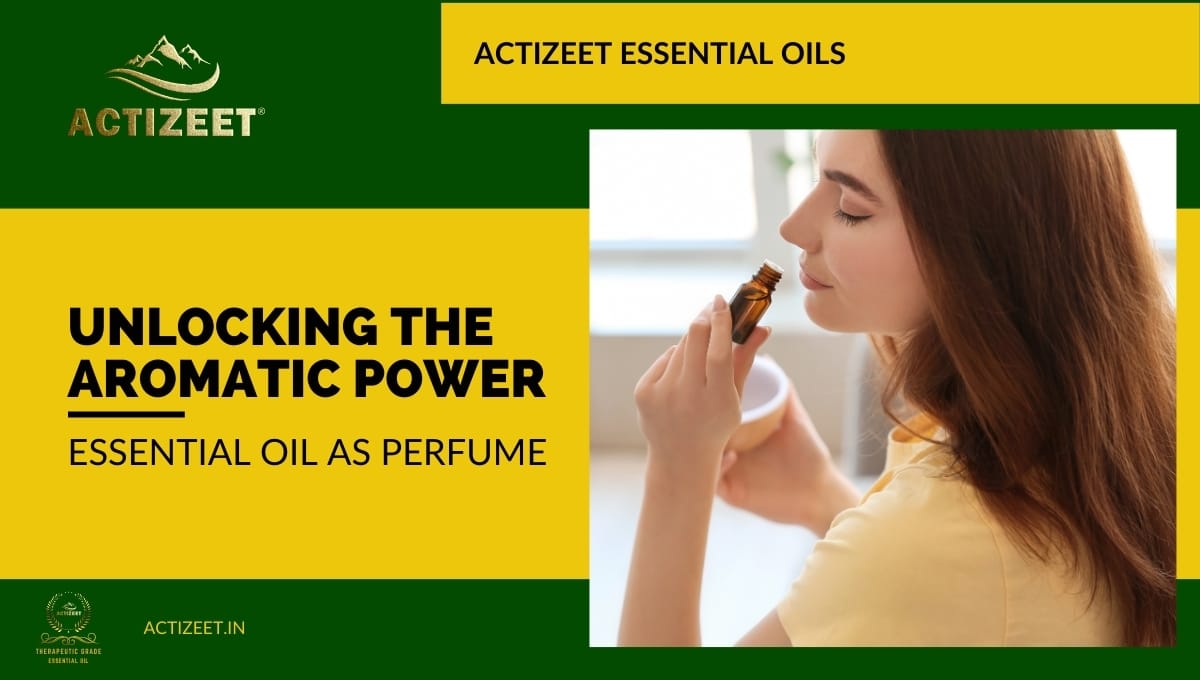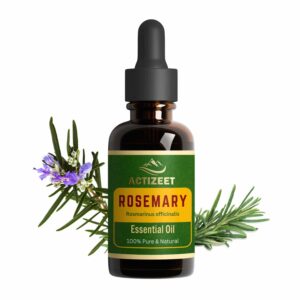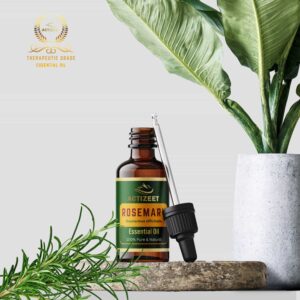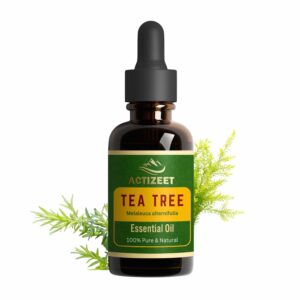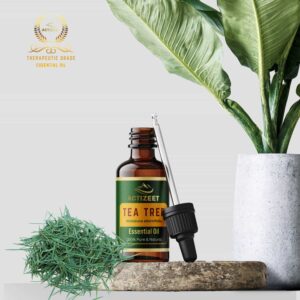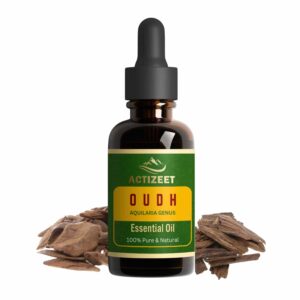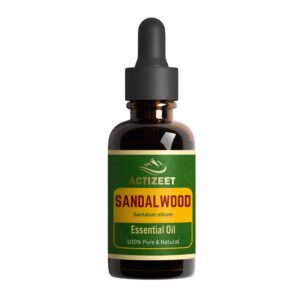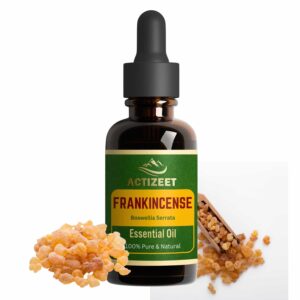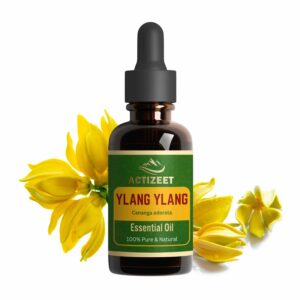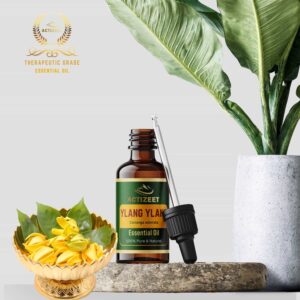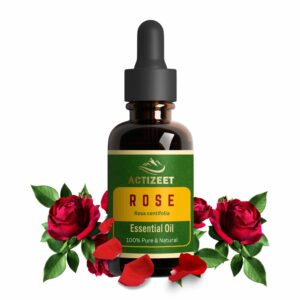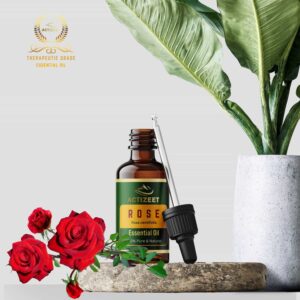In the world of scents and fragrances, one cannot overlook the allure and charm that essential oils bring to the table. These concentrated extracts derived from plants have long been treasured for their aromatic properties, and their potential as a natural alternative to traditional perfumes is a topic of great interest. In this article, we will explore the fascinating realm of using essential oils as perfume and delve into their unique characteristics, benefits, and applications.
Table of Contents
ToggleDefinition of Essential Oils
Essential oils are highly concentrated liquids that capture the essence, or “life force,” of plants. They are typically extracted through various methods, such as steam distillation or cold pressing. What makes these oils truly remarkable is their ability to retain the characteristic fragrance and therapeutic properties of the plant from which they are derived.
Unlike synthetic fragrances found in mainstream perfumes that often contain a cocktail of chemicals, essential oils provide a more natural approach to scent creation. The composition of essential oils can vary greatly depending on the plant source.
They contain volatile compounds responsible for both their fragrance and potential therapeutic effects. These volatile molecules give each essential oil its own distinct aroma profile, ranging from floral to woody or citrusy notes.
History of Essential Oils
The use of essential oils dates back thousands of years, with ancient civilizations valuing them for their healing properties as well as for spiritual rituals. The ancient Egyptians were known to incorporate aromatic substances into cosmetics, embalming practices, and religious ceremonies. They used plant-based essences such as frankincense and myrrh not only for their enchanting scents but also for medicinal purposes.
Similarly, in Ayurveda (an ancient Indian healthcare system), aromatherapy played a significant role in treating ailments by harnessing the power of essential oils. The Greeks and Romans, too, embraced the therapeutic and aromatic qualities of essential oils.
Renowned scholars like Hippocrates and Galen recorded their uses in various applications, including perfumes, medicinal potions, and even in the prevention of infection during times of plague. While the popularity of essential oils may have fluctuated throughout history, their inherent charm has never truly faded away.
Today, as people seek natural alternatives to synthetic fragrances that often contain harmful ingredients or trigger allergies, essential oils are experiencing a renaissance. Their rich historical significance combined with their versatile nature makes them an enticing option for those seeking a personalized and authentic fragrance experience.
Essential Oils vs. Perfumes
Differences in composition and production
When it comes to composition, essential oils and perfumes couldn’t be more different. Essential oils are derived from natural sources, such as plants, flowers, and trees, through various extraction methods like steam distillation or cold-pressing.
They contain concentrated aromatic compounds that give them their distinct scents. On the other hand, perfumes are typically a blend of synthetic fragrances combined with alcohol and other chemicals to create a desired scent.
In terms of production, the processes for creating essential oils and perfumes also diverge. Essential oils are often made in small batches to preserve the integrity of the plant’s fragrance and therapeutic properties.
This careful approach ensures that the final product retains its natural essence. Perfumes, on the contrary, are often mass-produced in large quantities using complex chemical formulations to achieve consistency across different batches.
Benefits of using essential oils as perfume
Using essential oils as perfume offers a range of benefits that set them apart from traditional perfumes. Firstly, since essential oils come directly from nature, they can provide aromatherapy benefits that can positively influence moods and emotions.
For example, lavender oil is known for its calming properties, which can help reduce stress and promote relaxation. Additionally, essential oils lack many of the potentially harmful chemicals found in synthetic fragrances used in commercial perfumes.
This makes them an appealing option for individuals with sensitive skin or allergies who still want to enjoy delightful scents without any adverse reactions. Moreover, using essential oils as perfume allows for customization by blending different oils together to create unique fragrance combinations tailored to individual preferences.
This personalized approach allows individuals to showcase their personalities through scent while enjoying the therapeutic effects offered by each specific oil. By opting for essential oil-based perfumes instead of traditional ones, one can indulge in captivating scents that not only smell fantastic but also offer a more natural and holistic experience for the senses.
Popular Essential Oils for Perfume
Lavender Oil: Soothing and Calming Scent
Ah, lavender, the delicate purple-hued flower that never fails to bring a sense of tranquillity. This versatile essential oil is a favourite among many perfume enthusiasts due to its soothing and calming scent.
Lavender plants, scientifically known as Lavandula angustifolia, have been cultivated for centuries in various regions of the world. Originally native to the Mediterranean region, lavender plants are now grown in abundance across Europe, Australia, and North America.
To extract the precious lavender oil from these enchanting flowers, there are primarily two commonly used methods: steam distillation and solvent extraction. Steam distillation is the most popular method for extracting lavender oil as it ensures purity without compromising its therapeutic properties.
The steam passes through the plant material, causing it to release its aromatic compounds, which then condense into liquid form. Solvent extraction involves using chemicals like hexane or ethanol to isolate essential oils from plant material.
What makes lavender oil truly special are its unique chemical compounds responsible for its captivating fragrance. One of the main constituents is linalool, an alcohol compound that gives lavender its floral aroma with a hint of sweetness.
Additionally, linalyl acetate contributes to its herbaceous scent while also providing soothing properties. These chemical components work synergistically to create a delightful fragrance that offers relaxation and promotes calmness.
Rose Oil: Romantic and Floral Scent
Roses have long been associated with love, romance, and beauty throughout history—and rightfully so! The mesmerizing scent of rose oil makes it a top choice in perfumery when aiming for a romantic and floral aroma that captivates the senses.
Rose oil is extracted from various species of roses through a process known as steam distillation. As an iconic symbol in cultures worldwide since ancient times, roses have been cultivated for their aromatic beauty.
Historically, rose oil was highly valued and employed in perfumes, cosmetics, and even religious rituals. Steam distillation is the most common method used to extract rose oil.
During this process, steam is passed through the rose petals, vaporizing the aromatic compounds contained within them. The steam is then condensed back into a liquid form, resulting in the fragrant rose oil.
The chemical components responsible for the enchanting scent of rose oil are quite diverse. Geraniol lends a rosy and citrusy note to the fragrance, while citronellol adds a fresh and slightly fruity aspect.
Furthermore, phenylethyl alcohol contributes to its delicate and sweet nuance. These compounds work harmoniously together to create an exquisite scent that evokes feelings of love and romance—a true olfactory delight!
Sandalwood Oil: Woody and Exotic Scent
Imagine walking through a forest filled with mystical trees emitting a woody aroma that transports you to exotic lands. That’s precisely what sandalwood oil offers—a captivatingly rich fragrance that carries both warmth and mystery. Extracted from various species of sandalwood trees like Santalum album or Santalum spicatum, this essential oil has deep cultural significance in many regions across the globe.
Sandalwood has been revered for centuries due to its numerous uses in spiritual rituals, traditional medicine practices, and perfumery. Its extraction primarily involves steam distillation or CO2 extraction methods ensuring that its unique scent remains intact throughout the process.
The captivating aroma of sandalwood can be attributed to several chemical constituents found within it. One such compound is santalol—a naturally occurring alcohol that contributes to its woody scent with undertones of sweetness and creaminess.
Another prominent component is an alpha-santol-an aromatic molecule known for its warm notes that add depth to sandalwood’s aroma. These chemical constituents combine to create an unmistakable olfactory experience, transporting you to ancient lands and infusing your perfume with a touch of exotic allure.
By incorporating these popular essential oils in perfumery, one can create enchanting fragrances that not only smell divine but also offer therapeutic benefits for the mind and body. Whether it’s the soothing lavender, romantic rose, or exotic sandalwood, each oil brings its unique charm to the world of perfumes—a testament to the endless possibilities that essential oils offer when used as fragrances.
Essential Oil Blending Techniques for Perfume Making
The art of blending different essential oils
When it comes to creating a unique and captivating perfume using essential oils, mastering the art of blending is crucial. Blending different essential oils allows you to create complex and harmonious scent profiles that evoke specific emotions or moods. It’s like being a perfumer in your own home!
Each essential oil brings its own distinct aroma and therapeutic properties to the blend, resulting in a customized fragrance that suits your preferences. Experimenting with various combinations can yield surprising results, as certain oils may complement or enhance each other when blended together.
Top, middle, and base notes in perfumery
Understanding the concept of top, middle, and base notes is vital in perfume making. These terms describe the different layers or stages of fragrance progression experienced when wearing a perfume.
Top notes are the first impression; they are light, fresh, and evaporate quickly. Common top-note essential oils include citrusy scents like bergamot or lemon.
Middle notes are the heart of the fragrance; they appear after the top notes have evaporated and add complexity to the scent profile. Floral scents, such as rose or jasmine, often serve as middle notes.
Base notes form the foundation of a perfume; they have a long-lasting scent that lingers on your skin even after hours of wear. Woodsy aromas like sandalwood or patchouli often act as base notes in perfumery.
Common blending techniques (layering, accords)
There are several tried-and-true blending techniques employed by perfumers to create well-balanced fragrances using essential oils. One popular approach is layering, which involves applying multiple fragrances consecutively to achieve the desired complexity on your skin.
Start with one primary oil as the base and then add complementary oils on top, allowing them to mix and interact. This technique allows for customization, as you can adjust the number of layers and the amount of each oil used based on your preference.
Another technique is creating accords, which are specific scent combinations that result in a distinctive aroma. Accords can be pre-blended combinations of essential oils or custom blends made by combining multiple oils in precise ratios to achieve a desired fragrance theme or effect.
These techniques provide endless possibilities for creating your own signature scents using essential oils. Remember, in the art of blending essential oils for perfume making, there are no strict rules.
It’s all about experimenting with different combinations and finding what appeals to your senses. Let your creativity guide you as you explore the vast world of aromas and create intoxicating scents that reflect your unique personality.
Application Methods for Using Essential Oils as Perfume
Dilution Ratios and Carrier Oils
When it comes to using essential oils as perfume, dilution is key. Pure essential oils are highly concentrated and can be too potent for direct application to the skin. That’s where carrier oils come into play.
These are neutral and mild oils that help dilute the essential oil while also providing a nice base for the fragrance. To achieve the right dilution, you should generally aim for a 2-5% concentration of essential oil in your perfume blend.
This means adding around 10-25 drops of essential oil per ounce of carrier oil. However, keep in mind that each essential oil has its own recommended usage rate, so it’s crucial to refer to specific guidelines for individual oils.
Safety Precautions when Applying Directly to Skin
While essential oils have many benefits, they can also cause skin irritation or sensitization if used improperly. To ensure safe application on the skin, there are a few precautions to keep in mind.
Firstly, always perform a patch test before using any new essential oil on your skin. Apply a small amount diluted in carrier oil on the inner side of your arm and wait for 24 hours to check for any adverse reactions.
Secondly, some essential oils are phototoxic, meaning they can cause sunburn or other skin damage when exposed to sunlight. Common examples include citrus oils like bergamot or grapefruit.
If using phototoxic oils in perfume blends, it’s best to avoid direct exposure to sunlight after application. Pregnant women and individuals with certain medical conditions should consult with healthcare professionals before using essential oils as perfume or applying them topically.
Popular Carrier Oils Used with Essential Oils
Carrier oils play an important role in blending and enhancing the aroma of essential oils in perfumes. These oils not only dilute the essential oils but also help them last longer on the skin. Here are a few popular carrier oils commonly used with essential oils:
- Sweet Almond Oil: Known for its mild scent and moisturizing properties, sweet almond oil is a popular choice as a carrier oil. It has a light texture and absorbs easily into the skin, making it an excellent base for perfume blends.
- Jojoba Oil: Technically a liquid wax, jojoba oil closely resembles our skin’s natural sebum, making it highly compatible and well-tolerated by most skin types. It has a long shelf life, provides excellent moisturization, and doesn’t leave behind any greasy residue.
- Fractionated Coconut Oil: This type of coconut oil remains in liquid form even at colder temperatures due to its specific fatty acid composition. It is colourless, odourless, lightweight, and absorbs quickly into the skin without clogging pores.
Its neutral nature makes it suitable for blending with various essential oils without altering their fragrances.
4. Grapeseed Oil: Extracted from grape seeds during winemaking, grapeseed oil is lightweight and non-greasy.
It contains high levels of antioxidants and vitamin E, which promote healthy-looking skin while acting as an ideal carrier oil for perfume blends. Remember to choose carrier oils based on your personal preferences and what works best for your skin type to create luxurious and well-rounded perfume creations using essential oils.
Longevity and Sillage: How Essential Oil Perfumes Perform
Factors affecting the longevity of essential oil perfumes
When it comes to the longevity of essential oil perfumes, several factors come into play. Firstly, the quality of the essential oil itself plays a significant role. High-quality oils that have been properly extracted and stored tend to retain their fragrance for a longer period compared to lower-quality oils.
Additionally, the chemical composition of the essential oil influences its staying power. Some oils, such as patchouli and vetiver, contain heavier molecules that evaporate more slowly, resulting in a longer-lasting scent.
Another factor is how the perfume is applied. Essential oils have different viscosity levels and absorption rates on the skin.
Diluting them in a carrier oil can help slow down evaporation and increase longevity. Applying essential oil perfumes to pulse points like wrists, behind the ears, or on clothing can also contribute to better retention.
Volatility differences between synthetic fragrances
When comparing essential oil perfumes with their synthetic counterparts, volatility plays a crucial role in their performance. Synthetic fragrances often contain volatile compounds that evaporate quickly when exposed to air or body heat. While this may result in an initially strong scent, it tends to fade rapidly.
In contrast, essential oils have varying volatilities depending on their chemical constituents. Some oils, like citrus-based ones, tend to be more volatile due to their lighter molecular weight.
They can give an intense burst of fragrance but may dissipate faster compared to heavier oils like patchouli or sandalwood. Overall, while synthetic fragrances may offer an immediate impact with their powerful projection, essential oil perfumes have a more nuanced and subtle approach with unique volatilities that lend endurance without overwhelming.
Conclusion
Using essential oils as perfume is not only a natural alternative but also a viable option for fragrance enthusiasts. The longevity of essential oil perfumes can be influenced by various factors, such as the quality of the oil, its chemical composition, and application methods. While synthetic fragrances may have their appeal with quick bursts of intensity, essential oils provide a more gentle and nuanced experience.
By exploring different essential oils and blending techniques, individuals can create their own signature scents that reflect their personalities and preferences. Additionally, the use of essential oils allows us to connect with nature’s aromatic offerings while avoiding potentially harmful chemicals found in synthetic fragrances.
So why not embark on a scent journey with essential oil perfumes? It’s an opportunity to indulge in delightful aromas while embracing the beauty of nature.
RECOMANDED PRODUCTS
-
Rated 4.72 out of 5
₹1,500.00Original price was: ₹1,500.00.₹1,200.00Current price is: ₹1,200.00. Incl. GST ADD TO CARTBuy Now -
Rated 4.88 out of 5
₹1,500.00Original price was: ₹1,500.00.₹1,200.00Current price is: ₹1,200.00. Incl. GST ADD TO CARTBuy Now -
Rated 4.74 out of 5
₹1,500.00Original price was: ₹1,500.00.₹1,200.00Current price is: ₹1,200.00. Incl. GST ADD TO CARTBuy Now -
Rated 4.63 out of 5
₹1,900.00Original price was: ₹1,900.00.₹1,450.00Current price is: ₹1,450.00. Incl. GST ADD TO CARTBuy Now -
Rated 4.72 out of 5
₹2,500.00Original price was: ₹2,500.00.₹1,950.00Current price is: ₹1,950.00. Incl. GST ADD TO CARTBuy Now -
Rated 4.88 out of 5
₹1,500.00Original price was: ₹1,500.00.₹1,200.00Current price is: ₹1,200.00. Incl. GST ADD TO CARTBuy Now -
Rated 4.80 out of 5
₹1,500.00Original price was: ₹1,500.00.₹1,200.00Current price is: ₹1,200.00. Incl. GST ADD TO CARTBuy Now -
Rated 4.88 out of 5
₹1,500.00Original price was: ₹1,500.00.₹1,200.00Current price is: ₹1,200.00. Incl. GST ADD TO CARTBuy Now
Related posts:
- Unlocking the Skin Benefits: Essential Oils Explained
- Unlocking the Power of Aniseed Essential Oil: Health, Beauty, and Culinary Benefits
- Unleashing the Power of Citronella: A Comprehensive Guide to Its Essential Oil Benefits
- Unlocking the Secrets: Ylang Ylang Essential Oil Benefits
- The Juniper Berry Magic: Unlocking the Health, Beauty, and Household Benefits of Essential Oil
- The Power of Basil Essential Oil: Benefits and Significance
- From Health to Home: Unlocking the Benefits of Grapefruit Essential Oil
- Unleashing the Power of Cedarwood Essential Oil: Discovering Its Physical, Emotional, and Spiritual Benefits

